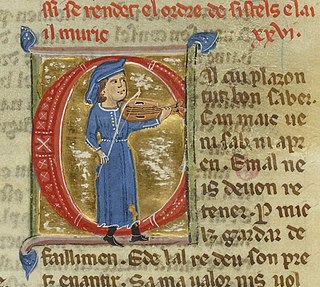
A troubadour was a composer and performer of Old Occitan lyric poetry during the High Middle Ages (1100–1350). Since the word troubadour is etymologically masculine, a female troubadour is usually called a trobairitz.

Na Castelloza was a noblewoman and trobairitz from Auvergne.
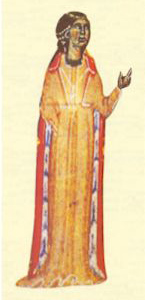
The trobairitz were Occitan female troubadours of the 12th and 13th centuries, active from around 1170 to approximately 1260. Trobairitz is both singular and plural.

Maria de Ventadorn was a patron of troubadour poetry at the end of the 12th century.

The Comtessa de Dia, possibly named Beatritz or Isoarda, was a trobairitz.
Almucs de Castelnau or Castelnou was a trobairitz, that is a female troubadour, from a town near Avignon in Provence. Her name is also spelled Almuc, Amucs, Almois, Almurs, or Almirs.
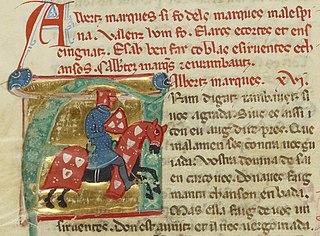
Albert Malaspina (1160/1165–1206/1212), called Alberto Moro and lo marches putanier, was a member of the illustrious Malaspina family. He was a noted troubadour and patron of troubadours. Albert disputes with Peire de la Caravana the position of earliest native Italian troubadour.
Bieiris de Roman(s) was a trobairitz of the first half of the thirteenth century. Her birthplace was Romans near Montélimar. Other than her name, which includes her place of birth, nothing is known of the details of her life, which has led to a significant gap in knowledge for scholarship analyzing her work. She left behind one canso, "Na Maria, pretz e fina valors", addressed to another woman named Mary. The poem is written in the typical troubadour style of courtly love and has been consequently analyzed as a lesbian poem. Bieiris may, however, be simply writing from the masculine point of view, fully immersing herself in the masculinity of the genre. Nonetheless, the certain ascription of the poem to a woman makes it unlikely that there was any attempt to "fool" the audience: the poem is consequently emasculated. The Na Maria of the poem has even been interpreted as the Virgin Mary, and the sincerity and innocence of the lyrics do not disqualify it.
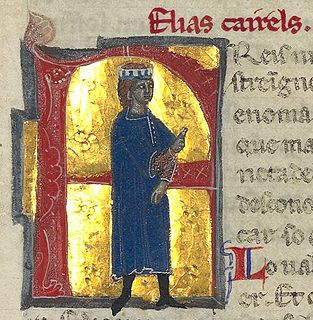
Elias Cairel was a troubadour of international fame. Born in Sarlat in the Périgord, he first travelled with the Fourth Crusade and settled down in the Kingdom of Thessalonica at the court of Boniface of Montferrat (1204–1208/10) before moving back to western Europe, where he sojourned at the court of Alfonso IX of León (1210–11) and in Lombardy (1219–1222/24). He wrote fourteen surviving lyrics: ten cansos, one tenso, one descort, one sirventes, and one Crusade song. He was partial to refrain rhyming and coblas capfinidas.
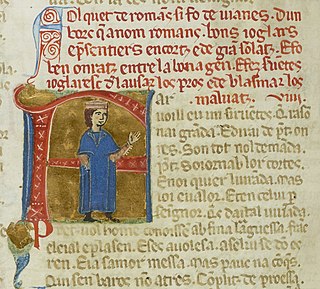
Falquetde Romans was the most famous troubadour attached to the court of Frederick II, Holy Roman Emperor, where he garnered a high reputation despite the fact that his career began as a jongleur. His surviving work consists of fourteen or fifteen pieces: seven sirventes, three tensos, two or three cansos on courtly love, a salut d'amor of 254 lines, and a religious alba. His poetry is, in general, clear and elegant, and he was apparently very religious.

Gui de Cavalhon, Cavaillo, or Gavaillo was a Provençal nobleman: a diplomat, warrior, and man of letters. He was probably also the Guionet who composed tensos and partimens with Cadenet, Raimbaut de Vaqueiras, Mainart Ros, Pomairol, and a certain Guillem.

Raimon de (las) Salas or la Sala was a Provençal troubadour probably of the 1220s/1230s. His short vida survives. He left behind four or five poems, but he must have composed more, since he is vida records his composition of cansos, albas, and retroensas. Along with Ferrari da Ferrara, he is the only troubadour known to have tried his hand at the retroensa.
Lombarda was an early 13th-century trobairitz from Toulouse known only from her vida and a short tenso. Though her name has been taken to imply that she was from Lombardy, it rather indicates that she was from a banking or merchant family, since "Lombard" was used throughout western Europe in this sense at the time. Other scholars have suggested, because of her connexion to a lord of Armagnac, that she was from Gascony.

Garsenda was the Countess of Provence as the wife of Alfonso II from 1193 and the Countess of Forcalquier in her own right from 1209 and subsequently united with Provence. She was also a patron of Occitan literature, especially the troubadours, and herself wrote some lyric poetry and is counted among the trobairitz as Garsenda de Proensa. She was, in the words of her most recent editors, "one of the most powerful women in Occitan history".

N'Iseut de Capio was a noblewoman and trobairitz from Gévaudan. She was a neighbour and contemporary of the trobairitz Almucs de Castelnau, with whom she shared the composition of a tenso. It is her only surviving piece of work.
Alais and Yselda were two young noble trobairitz, probably sisters or nuns, who wrote an Occitan tenso with an elderly woman named Carenza. Their poem begins Na Carenza al bel cors avinen, and the first two stanzas were composed by Alais and Yselda. It is the last two stanzas, composed by Carenza, that are the most difficult to interpret. Magda Bogin and Peter Dronke have read the opening line of both her stanzas as beginning with the address N'Alais i na Iselda. There is, however, an alternative interpretation that sees the address as to a "N'Alaisina Iselda". Under this interpretation, there are two, not three, interlocutors in the poem: Carenza and Alaisina Yselda. Within the poem, in favour of the multiplicity of younger women is the phrase nos doas serors, but against it is the continuous use of the first person singular. The poem is preserved amidst a collection of coblas esparsas in only one Italian chansonnier.

Joan d'Aubusson or d'Albusson, known as Johan or Johanet to Occitan contemporaries, was an Auvergnat troubadour and a Ghibelline. Only three of his works survive: two tensos and a cobla.
Guillelma de Rosers, also spelled Guilleuma, Guillielma, Guilielma, or Guilhelma, was a Provençal trobairitz of the mid-thirteenth century, one of the last known trobairitz. She was originally from Rougiers but lived in Genoa for a long time, where she met Lanfranc Cigala, who wrote about her in some songs. These and Lanfranc's vida form the major source of information about her life. She is also the addressee—la flor de cortezia, the flower of courtliness—of an anonymous canso, "Quan Proensa ac perduda proeza", which bemoans her long stay in Genoa.
Arnaut Plagues or Plages was a troubadour probably from Provence.
Bernart Arnaut d'Armagnac, also Bernard Arnaud, was a troubadour and from 1217 the Count of Armagnac in opposition to his brother, Gerald V, who inherited it from the childless Gerald IV. Bernart and Gerald were both sons of Bernard de Fézensaguet.